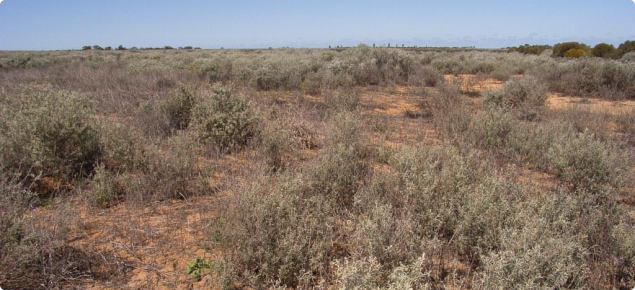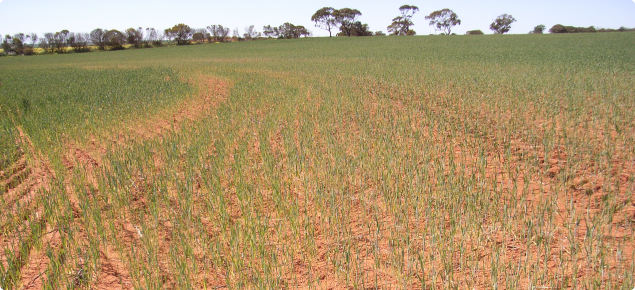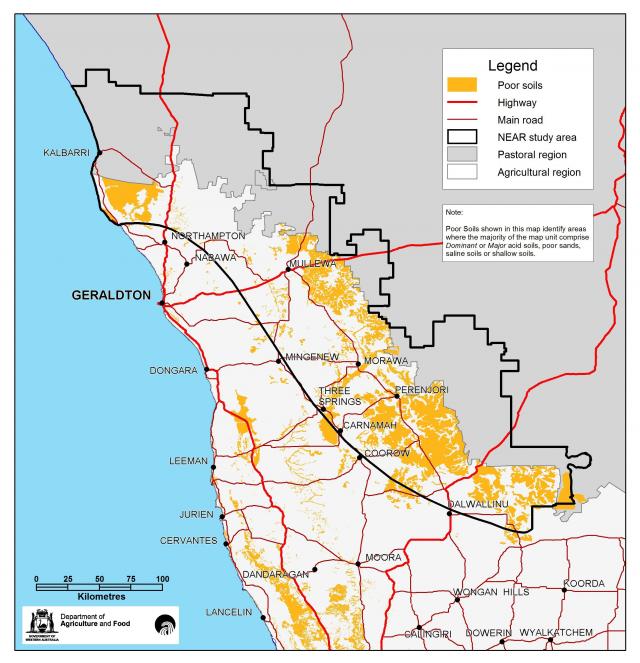Why we did this work
Between 2000 and 2010, the north-eastern agricultural region (NEAR) of Western Australia had a range of good and bad seasons, including severe dry seasons in 2006 and 2007. Declining winter rainfall resulted in some soil types becoming marginally productive or unproductive.
Soils with physical and chemical limitations, such as shallow depth, acid subsoil or poor water-holding capacity, are increasingly uneconomic to farm in a drying climate.
To assist farmers in the NEAR to manage these soils, we investigated unproductive soils and management options used by landholders. Seven case studies were produced:
- costs and benefits of planting alleys of oil mallees
- subdividing a farm to allow the sale of the less productive cropping areas
- benefits of establishing subtropical perennial grasses on pale deep sand
- using rotary spading to incorporate lime to reduce subsoil acidity
- comparing mouldboard ploughing and rotary spading for reducing yield limitations caused by water repellence and subsoil acidity
- incentive programs available to farmers to change land use on unproductive soils
- variable rate technology to better match crop inputs to yield potential on unproductive soils.
The investigation identified Information and policy gaps, and made recommendations – on management options and research and development opportunities – for government and industry.
Which soil types are unproductive?
- A survey in 2008 of more than 10% of farm businesses in the NEAR estimated that 8% of cleared farming land was classed by respondents as consistently unproductive.
- If the predicted trend towards a drier climate continues, an additional 36% of soils in the region are estimated to become unproductive.
- In eastern districts, respondents identified salt-affected and deep, acid sandplain soils as unproductive; in the north-western districts, pale deep sands and shallow sands over gravel or rock are classed as unproductive (Figure 1).
Managing unproductive soils
Results from the 2008 survey were:
- About 70% of respondents have tried cropping these unproductive soils; 80% of those reported unprofitable results.
- If farmers stopped cropping these areas, whole-farm profit would increase.
- Respondents indicated that variable rate technology (VRT) can help to increase profitability on paddocks with these soils. This study suggests that even with reduced inputs on consistently poor-performing soils, break even yields were rarely achieved. However, the financial losses were lower and hence whole-farm profit increased. VRT may help farmers to reduce the whole-farm loss from these areas but it is unlikely to make them profitable in their own right.
- VRT will reduce variable costs and overall losses where discrete areas of unproductive soil occur within paddocks and farmers wish to keep the paddock shape and dimensions consistent for efficient operations.
- Three-quarters of respondents would be willing to permanently revegetate soils which have become consistently unproductive to crop.
- Respondents said they were more likely to permanently revegetate unproductive soils if they received subsidies for revegetation, fencing incentives and payment for carbon credits.
Opportunities to change land use
The main purpose of changes in land use on these unproductive soils is to reduce losses. In some cases, there could be opportunities to make a net profit from changed management:
- Carbon farming: a carbon market could provide an opportunity for growers to permanently revegetate and generate income from these unproductive soils. Oil mallees are the dominant species planted for carbon but their growth rates and survival on these unproductive soils are poor. Identifying suitable local native plants that grow on these soils and their carbon sequestration ability needs investigating.
- Excision and sale of consistently unproductive agricultural land: policies that restrict subdivision of agricultural land would need to be amended.
For more information
Download the Resource management technical report 379 'Changing land use on unproductive soils'.





